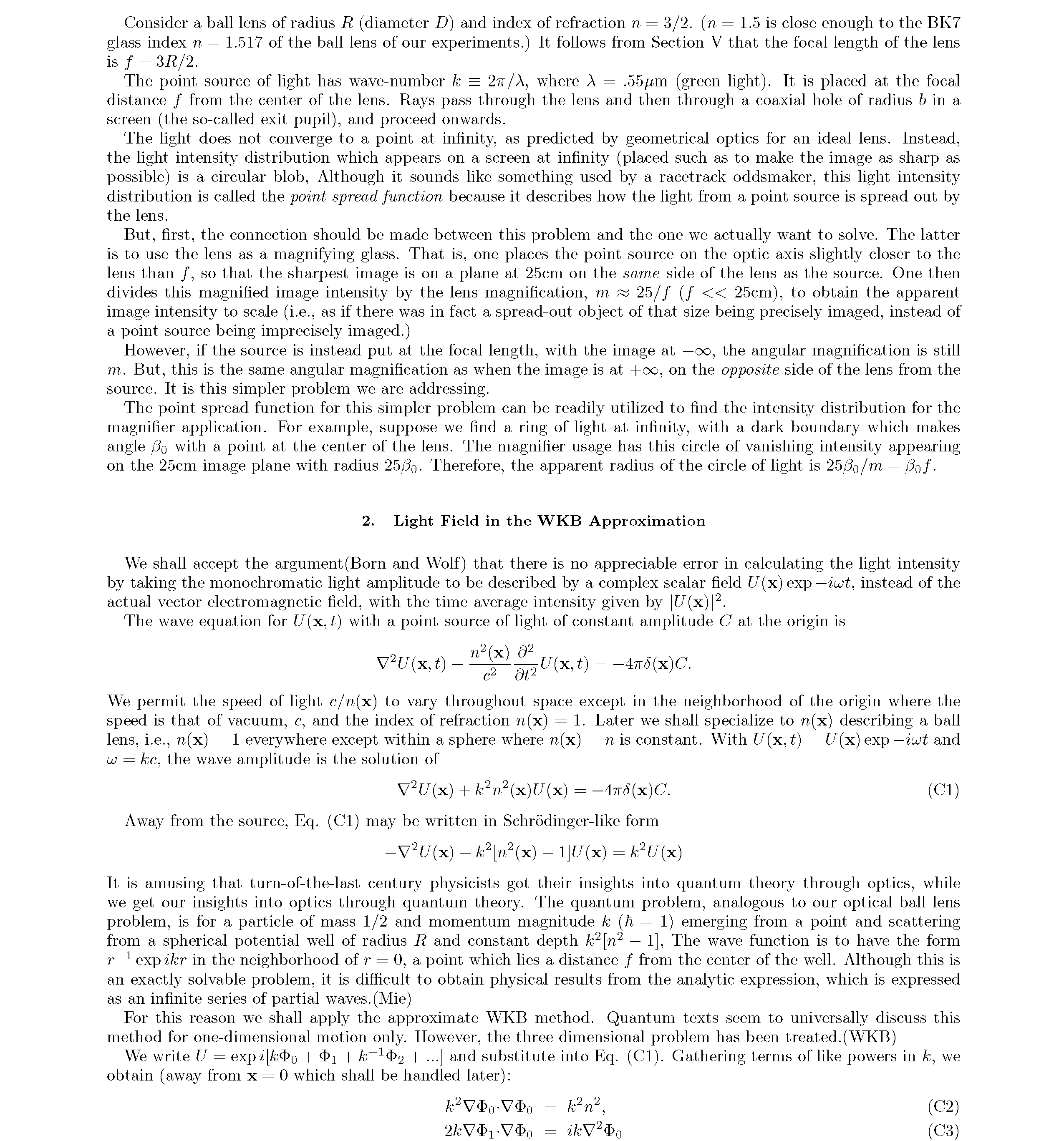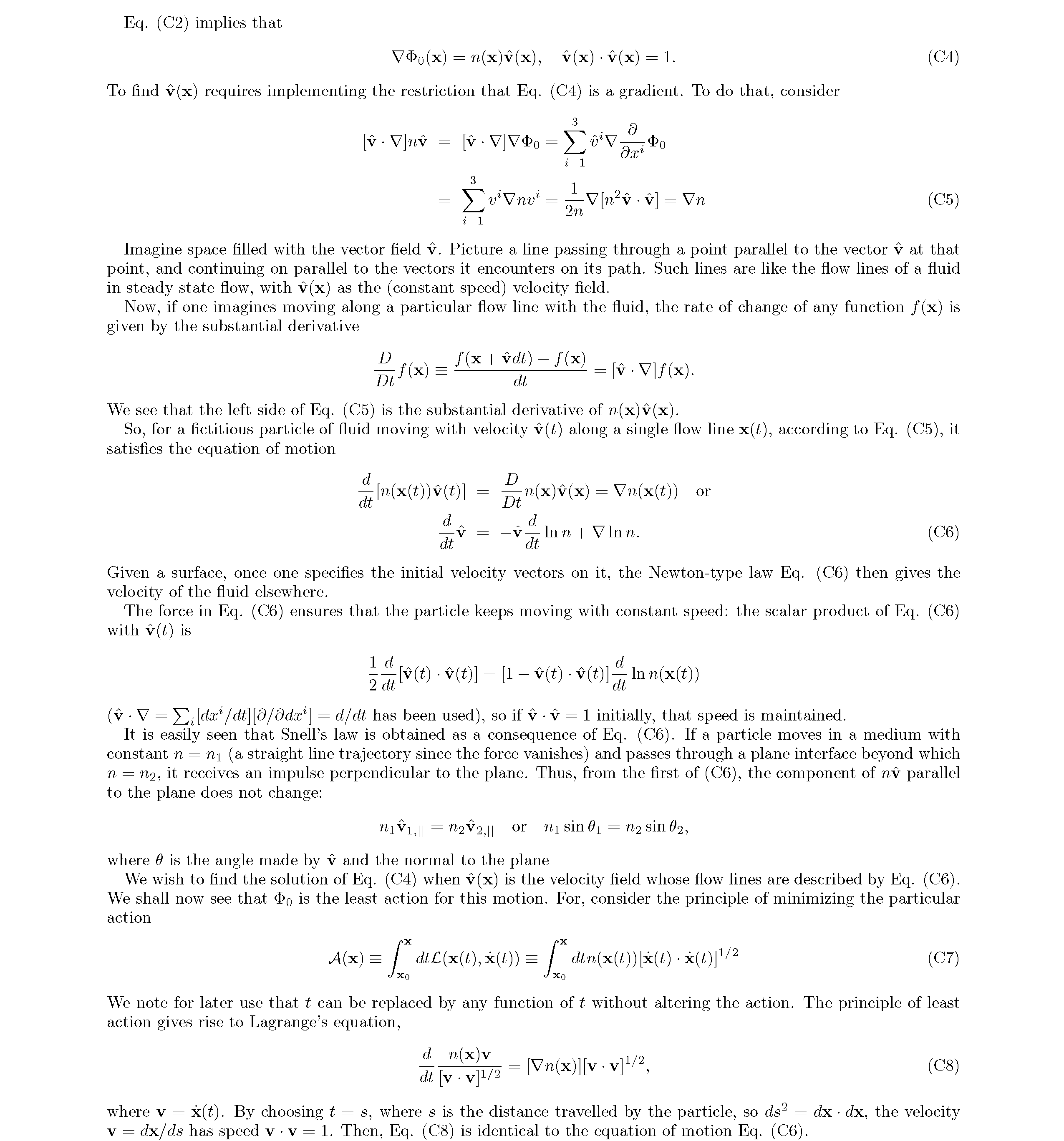What Brown Saw and You Can Too




------------------------------------------------------------------
M. Born and E. Wolf, Principles of Optics (Pergamon, Oxford 1983), sixth (corrected) edition, p. 387.
Mie. A simpler problem is the scattering of a plane wave by a sphere. The solution for our problem (scattering of a wave emerging from a point source) is a superposition of solutions of the plane wave problem. However, this ``simpler" problem is itself quite complicated. Its solution can be written exactly, as an infinite sum of angular momentum eigenstates, each with a spherical Bessel function giving the radial behavior. Since lambda<<radius R of the sphere, one cannot truncate the series at a few terms. Sophisticated techniques (such as the Watson transform, Regge pole theory, method of steepest descent) are used to sum appropriate terms corresponding to the physical behavior of rays: such an approach was first discussed by Debye. The first sum corresponds to reflection from the sphere, the second to the geometrical optics refraction and its attendant aberrations, the third to one internal reflection (responsible for the behavior of the rainbow), the fourth to two internal reflections (responsible for the behavior of the glory), etc: H. M. Nussenzveig, Journ. Math. Phys. 10, 82 & 125 (1969). The sum for the electromagnetic field is called the Mie solution. For an analytic treatment, see W. T. Grandy Jr. Scattering of waves from large spheres} (Cambridge U. P., Cambridge 2005). Mie solution calculators, which sum the terms numerically, are available on the web, e.g., http://omlc.ogi.edu/calc/mie_calc.html.
WKB. H. M. van Horn and E. E. Salpeter, Phys. Rev. 157, 751(1967): this discusses the pioneering 1928 work of J. H. van Vleck.